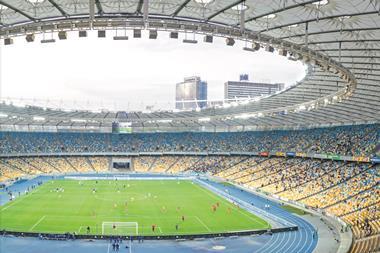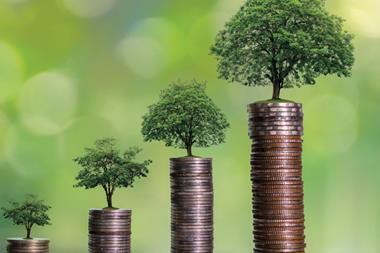Sxponsored commentary from Vontobel
The transition to a low carbon economy requires political will, a carrot-and-stick approach and the investment of significant resources. The public sector won’t be able to finance the transition alone. Governments shall continue to support market investments in companies and technologies providing solutions to environmental problems. We identify some attractive investment opportunities for impact investing.
Elena Tedesco
CFA, Portfolio Manager
COP26 going beyond “blah blah blah” statements
We were in Milan when the Italian prime minister Mario Draghi hosted the pre-COP26 meetings, participating governments exchanged their draft proposals and climate activists such as Greta Thunberg highlighted it’s no longer time for “blah blah blah” statements. So, we put together our wish list and investment considerations.
Aside from clear actions and incentives, we would like to hear about how net-zero targets can be achieved and which ‘carrots and sticks’ will support this. We would like to see mechanisms to stop green-washing, including intermediate milestones. Furthermore, it would be important to address the reasons for the ongoing deforestation in the Amazon and reinvigorate article 6 in the Paris Accord, which cov- ers international carbon markets and other forms of cooperation. Article 6 is still in limbo, but if enacted, it could set a way to reward Brazil with a financial incentive to protect the Amazon in view of its vast carbon storage abilities benefitting the whole globe. We’d welcome a ‘just transition’ as the social dimension is important to ensure that vulnerable households can participate in the transition to a low carbon economy and workers in stranded assets can retrain to cope with job losses. This requires inclusive benefits reaching the poorest countries and communities. Lastly, we would like to see mechanisms to mobilise financial resources. Decarbonising the world’s economy by the middle of this century is going to cost trillions of dollars . This is where inves- tors can act as an indispensable part of the solution.
Looking through the investor’s lens
Our climate is changing at an alarming rate and we’re already feeling the effects. To stop this, key areas like transportation, building con- struction and waste management need to lower emissions significantly and simultaneously, otherwise the global GHG reduction targets of 80 to 95% set under the Paris Agreement in 2015, will be out of reach.
All parts of the economy would need to decarbonize to achieve the 1.5-degree pathway. For investors, we believe this offers opportunities to finance growing areas of the economy that offer scalable solutions to environmental challenges, while generating solid returns. Investors can measure the impact produced by the companies that participate in the value chains providing products and services to reduce or avoid emissions. The impact pillars are aligned to the UN Sustainable Development Goals (SDGs).
Clean energy – replacing fossil fuels with renewables
Energy accounts for the lion’s share of GHGs globally, and overlaps with the other pillars. Many countries aim to eliminate coal as an energy source over time. The investment opportunities lie in electricity, hydrogen and heat generated from renewable resources and technol- ogies enabling not only a reliable, but also a smarter and greener grid.
Green buildings – construction with an eye on efficiency
Buildings account for 40 % of global energy consumption and 33 % of GHG emissions. We invest in technologies and materials that lower the environmental impact of a building over its entire lifecycle, from site selection to material choices, construction, operation, maintenance and demolition. The focus is on minimizing energy use in buildings through energy-efficient measures and adopting renewable energy to meet remaining energy needs.
Resource-efficient industry – cleaner processes
The industrial sector accounts for 24% of GHG emissions. Resource-efficient industries play a vital role in moving towards a more environmentally friendly world. Clean and efficient production processes will reduce energy and materials consumption while increasing the output needed to cope with rising demand. Importantly, the digital transformation is paving the way for new approaches to development, production, and the entire logistics chain.
Low-emission transportation – traveling without shame
The transportation sector is a significant contributor to global emissions and pollution (22%). We concentrate on railway solutions for passengers and cargo transport as well as on other alternatives to internal combustion engines (ICE). Namely, on companies that shape the future of mobility by offering innovative solutions and key technologies for low-emission transportation that saves time and resources.
Circular economy – new life after ‘death’
A significant portion of waste is made of plastic. Unless there is a change in current trends, around 12 billion tons of plastic waste will be in landfills or in nature by 2050, with the amount of plastic in the oceans surpassing the amount of fish. Therefore, re-using resources and reducing waste is important. We focus on companies that offer recycling solutions or integrate lifecycle management concepts in their product design from the start, through engineering design and then manufacturing, servicing and disposal of their goods.
Legal disclaimer
This marketing document was produced by one or more companies of the Vontobel Group (collectively “Vontobel”) for institutional clients.
This document is for information purposes only and nothing contained in this document should constitute a solicitation, or offer, or recommendation, to buy or sell any investment instruments, to effect any transactions, or to conclude any legal act of any kind whatsoever. Although Vontobel believes that the information provided in this doc- ument is based on reliable sources, it cannot assume responsibility for the quality, correctness, timeliness or completeness of the information contained in this document. Except as permitted under applicable copyright laws, none of this information may be reproduced, adapted, uploaded to a third party, linked to, framed, performed in public, distributed or transmitted in any form by any process without the specific written consent of Vontobel. To the maximum extent permitted by law, Vontobel will not be liable in any way for any loss or damage suffered by you through use or access to this information, or Vontobel’s failure to provide this information. Our liability for ne gligence, breach of contract or contravention of any law as a result of our failure to provide this information or any part of it, or for any problems with this information, which cannot be lawfully excluded, is limited, at our option and to the maximum extent permitted by law, to resupplying this information or any part of it to you, or to paying for the resupply of this information or any part of it to you. Neither this document nor any copy of it may be distributed in any jurisdiction where its distribution may be restricted by law. Persons who receive this document should make themselves aware of and adhere to any such restrictions. In particular, this document must not be distributed or handed over to US per- sons and must not be distributed in the USA.

















No comments yet